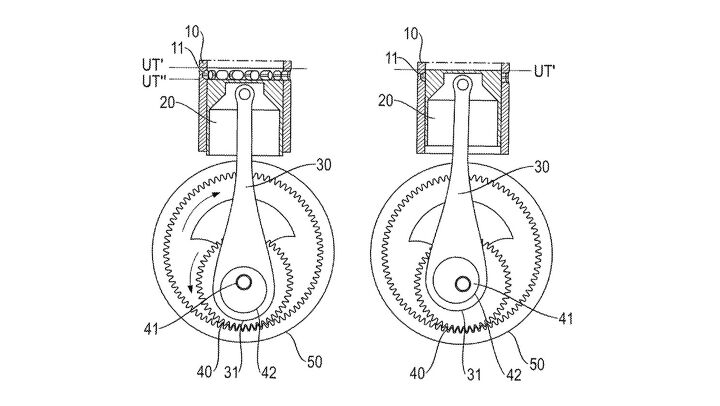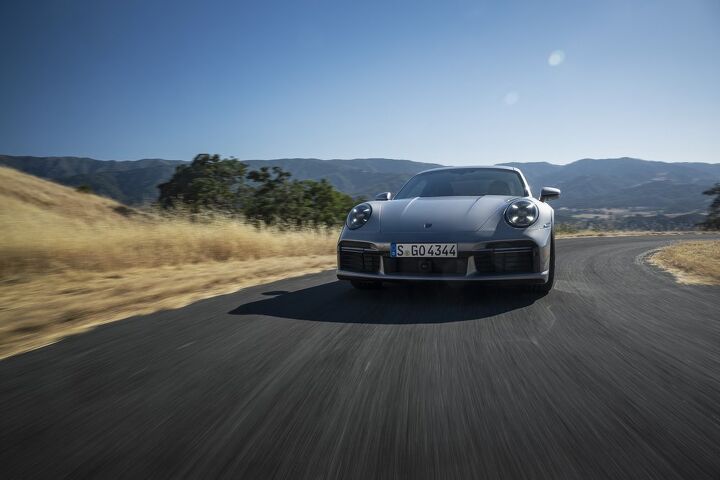New Patent Shows How Porsche Plans To Keep Combustion Alive

The AutoGuide research department strikes again— this time discovering a wild new engine concept from Porsche that could bring huge gains in both efficiency and power density.
Porsche has filed a patent application with the USPTO—Appl. No. 18/585,308—for an innovative engine design described as having "two times three strokes," it was developed in collaboration with the Technical University of Cluj-Napoca in Romania. The application actually claims priority on a German Patent application Porsche filed in February of this year.
The proposed engine features a unique crankshaft mechanism that moves within a ring (annulus), resulting in a motion similar to a spirograph toy. Unlike conventional engines, the crankshaft rotation creates two different top dead centers (TDC) and two different bottom dead centers (BDC) during the cycle.
This engine completes a full cycle with a 1080° rotation of the crankshaft, effectively functioning as a six-stroke cycle. However, it is also characterized by having two three-stroke processes, each including a power and compression stroke. The six phases of the engine cycle are:
1) Intake
2) Compression
3) Power
4) Compression
5) Power
6) Exhaust
During this cycle, the piston reaches the higher TDC between the second and third strokes, and again between the fourth and fifth. It hits a lower TDC between the sixth and first strokes. The BDC is encountered between the first and second strokes and again between the fifth and sixth, with a lower BDC during the scavenging phase between the third and fourth strokes.
The cylinder arrangement is crucial to implementing this method. It includes a piston connected to a planet wheel via a connecting rod. The planet wheel engages with an annulus and rotates within it, linked to the crankshaft. The unique eccentric arrangement of the connecting element on the planet wheel enables the piston to reach the specified dead centers at different positions, facilitating the six-stroke cycle.
The cylinder also features scavenging ports and valves that control the flow of the air-fuel mixture and exhaust gases. The system can also include mechanisms to adjust the compression ratio and timing, further optimizing the combustion process. It's possible the additional scavenging phase could even help boost the efficiency of synthetic e-fuels, or even aid in hydrogen combustion. Hydrogen is known for its volatility, which also allows for the fuel to combust with extremely lean air/fuel mixtures— in fact, hydrogen can be run in excess of Lambda 2.00, and I've heard of it being run up to a lambda of 7.00.
The design is claimed to produce more power than a traditional four-stroke engine due to the additional power stroke while offering cleaner combustion than a two-stroke engine. The configuration is flexible and can include multiple cylinders, ideally in multiples of three, allowing it to be adapted into various engine layouts such as Inline, V, W, or flat/boxer configurations.
Become an AutoGuide insider. Get the latest from the automotive world first by subscribing to our newsletter here.

An experienced automotive storyteller and accomplished photographer known for engaging and insightful content. Michael also brings a wealth of technical knowledge—he was part of the Ford GT program at Multimatic, oversaw a fleet of Audi TCR race cars, ziptied Lamborghini Super Trofeo cars back together, been over the wall during the Rolex 24, and worked in the intense world of IndyCar.
More by Michael Accardi




































Comments
Join the conversation
This makes my head hurt. Wonder if it is allowable by F1 rules? That could be a game changer.